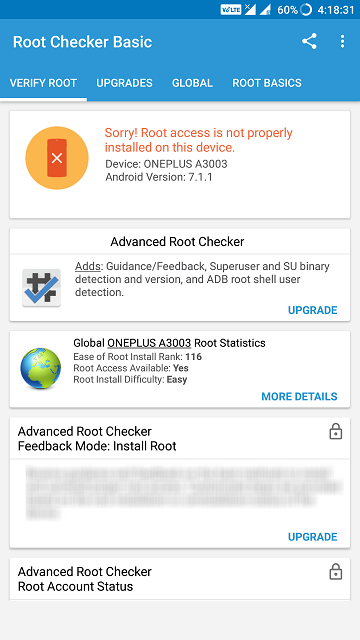


- #Spoof mac for wifi access update#
- #Spoof mac for wifi access code#
- #Spoof mac for wifi access windows#
Let us import the required modules as follows − import socket import struct import binascii Save it as.reg, Create a reset.reg file with the above with your original MAC address to reset it to your default.
#Spoof mac for wifi access code#
Along with that, we also need to use the code of ARP protocol. For this, we need three MAC addresses - first of the victim, second of the attacker and third of the gateway. In this section, we will understand Python implementation of ARP spoofing. But there’s a much, much simpler way: call hotel tech support. Spoof your Roku’s MAC address on your computer to authenticate. Most of the solutions to this online aren’t very good: Bring a travel router.
#Spoof mac for wifi access windows#
If using Windows 7, you must use a special format as we'll note in a moment. Choose the Network Address or Locally Administered Address Property, select the Value radio button, and then enter the new MAC address. On the Network Adapter Properties window, select the Advanced tab. This information allows for more timely and informed security decisions. SafeConnect NAC gathers a wealth of real-time and historical context-aware device information called Contextual Intelligence, such as Username, IP Address, MAC Address, Role, Location, Time, Ownership and even Compliance Status. To find the MAC address on a Windows based device, you'll need to: Click Start. Depending on whether you have Windows or a Mac, you'll have to manually search for said MAC address. Subject: ClearPass - Preventing MAC SpoofingTo get gaming, you're going to have to use your device MAC address for your Xbox 360. Here is a screen shot where the change is to be made: Not the most ideal situation because a lot can be accomplished by an internal hacker in 31 seconds, but it's meeting an audit item for now. Now I'm looking through Cisco documentation to see why it takes them 22 more seconds to receive the CoA and act upon it. Clearpass did it's part (conflict flag and send CoA) in 8 or 9 seconds. There was one catch took 31 seconds for the switchport to shut off. Clearpass recognized the conflict, flagged it and sent the CoA to the Cisco access switch in the background to shut the port. Interesting that when it does that it updates the endpoint database entry of the phone with the hostname of the Linux laptop, yet still keeps it classified as a Cisco voip phone.Īt any rate, when the endpoint cache timer was set to 10 seconds, by the time the Linux box was on the network looking to spoof, 10 seconds had elapsed and it went straight to the endpoints database to MAC auth instead of cache. If the cache is associating a MAC with a legit endpoint (in this case a Cisco phone), the spoofing device (in this case a Linux laptop) will appear to Clearpass as the phone and let it on. The conflict flag was not triggering when the Linux laptop spoofed the MAC of a Cisco phone because it looks at the endpoint cache first before the endpoints database. Doing 802.1x on our phones and eliminate MAB is a plan of attack, but then the pen tester migrates to the printer in the next cube and you're back to the same problem.Īny advice anyone has would be most appreciated.įorgot to post a solution to this.worked with TAC over the course of a couple weeks and what we found was the endpoint cache has to be changed from 300 seconds (5 minutes) to a much lesser value (I made ours 10 seconds). ClearPass has never fingerprinted the device previously, so when it presents itself to ClearPass with the MAC of the phone it MAC Auths like the phone does.Īm i missing something, or is this a gaping hole in a NAC in general? Taking suggestions for other ways to prevent this. With all of that being said, if a hacker comes on to your network and has never been seen before, and spoofs the address of a peripheral device (phone, printer, etc) from the getgo, it seems there is no way to stop them, based on how conflict triggers work.

Example: Profiled as a computer from DHCP fingerprinting, but profiled as a SmartDevice from HTTP fingerprinting. The fingerprinting from different sources resulting in two different device categories.
#Spoof mac for wifi access update#
Example: device is originally profiled as a computer when it first shows up on the network, but after spoofing the MAC of a printer, the endpoint DB will be update as printer and the Conflict True flag is raised.Ģ. Conflicts trigger if the fingerprint from the same source changes over time, resulting in two different device profiles. After working with TAC I received the following info on Conflicts:ġ. I have conflict triggers on and enabled at the top of the MAB Service to deny spoof attempts, however this one did not catch. Have a pen tester in and he was able to get on the network in 20 seconds by spoofing the mac address of a Cisco IP phone, which authenticates via MAB.


 0 kommentar(er)
0 kommentar(er)
